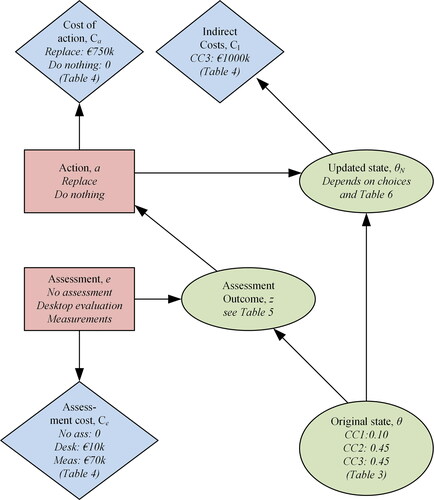Figures & data
Figure 1. Influence diagram for the fundamental decision case, from Björnsson et al. (Citation2019).
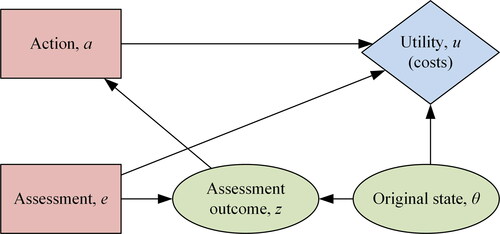
Figure 2. Decision tree for the fundamental case, related to the influence diagram in and EquationEquations 1(1)
(1) and Equation2
(2)
(2) , from Björnsson et al. (Citation2019).
![Figure 2. Decision tree for the fundamental case, related to the influence diagram in Figure 1 and EquationEquations 1(1) u*=maxe(∑z∈ZP(z|e)·(maxa(∑θ∈Θu(e,z∼,a,θ∼)·P″(θ|z))))(1) and Equation2(2) maxa(E[u(a|e,z∼)]=maxa(∑θ∈Θu(e,z∼,a,θ∼)·P″(θ|z)))(2) , from Björnsson et al. (Citation2019).](/cms/asset/e91f0abf-1a8d-460c-bb46-3d1a461382bd/nsie_a_1890141_f0002_c.jpg)
Table 1. Condition classes in the Swedish bridge management system (Trafikverket, Citation2015).
Figure 3. Schematic representation on the degree of degradation dependence on time, with uncertainty represented by distribution around the degradation curve, for a section of the lifetime for a structure.

Figure 4. Updated influence diagram for the extended fundamental case (original influence diagram can be found in ).
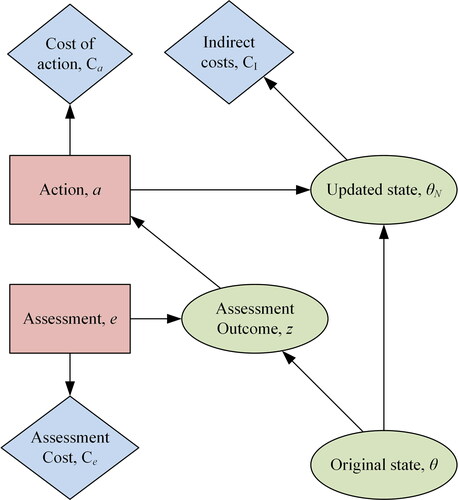
Figure 5. Extended influence diagram to incorporate time aspects such as updates in bridge state and benefits for the overall bridge stock if do nothing is chosen at the first decision point (extended from and 4), where t2 occurs after t1.
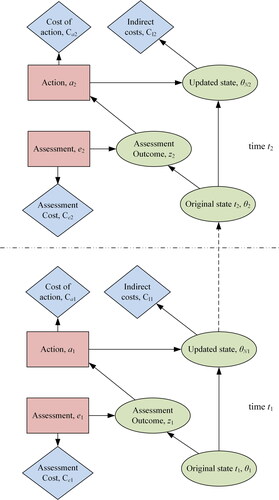
Figure 6. Picture of the bridge with details of the damaged column (bottom left) and damaged edge beam (bottom right), courtesy of the Swedish Transport Administration.
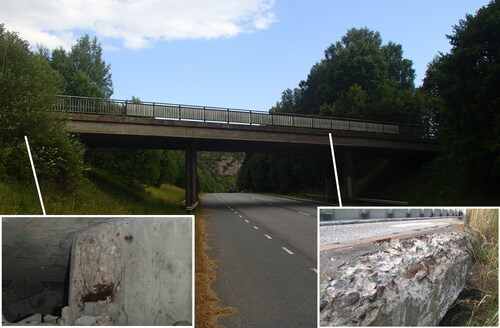
Table 2. Results from routine inspection.
Table 3. Distribution of probability of original state in a specific condition class.
Table 4. Costs used in the study.
Table 5. Sample likelihoods, z, used for the assessment methods.
Table 6. Probabilities of updated state after action is chosen, including probability of degradation if “Do nothing” is the chosen action.
Figure 8. Sequential updating decision model as illustrated in , with actual inputs in the various nodes.

Table 7. Expected costs for the different assessments using point-in-time decision model and sequential updating decision model. (€).
Table 8. Expected costs for the two possible actions using point-in-time decision model and sequential updating decision model, related to the two available assessment methods.
Figure 9. Relation between expected costs (left y-axis) for the assessment options and the likelihood of the edge beams being in CC3 for point-in Time model (left) and sequential updating model (right), with a relation CC2/CC1 of 4.5; along with the Value of Information (VoI; right y-axis) of the two assessment options (desktop evaluation (B) and measurements (C)), defined as the difference between expected costs for no assessment and the expected costs for the respective assessment option, minus the cost of the assessment method.


